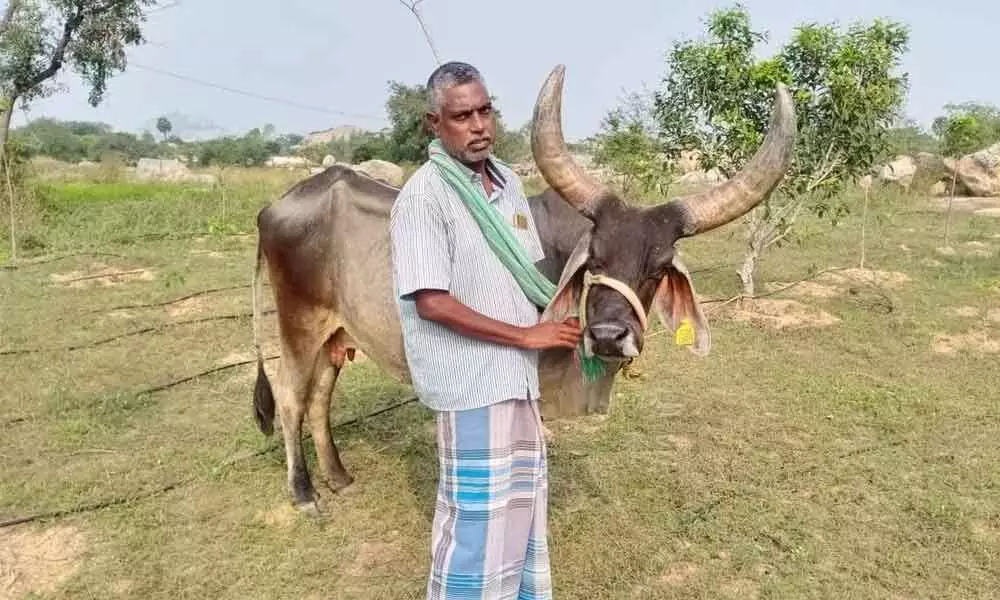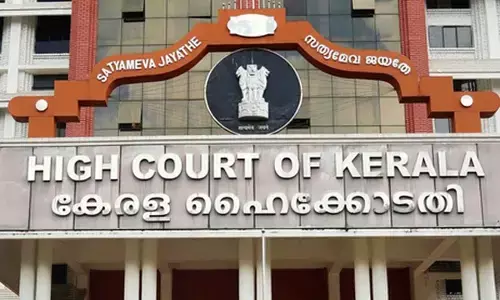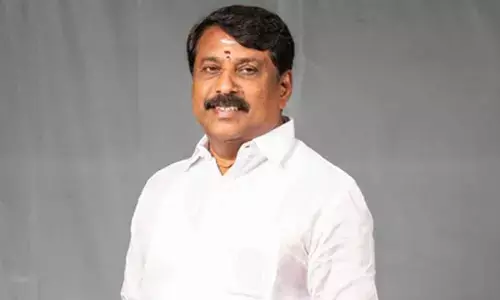TN farmer sets example by developing integrated farm

Two years ago, when I started tree-based farming, people who made fun of me, today seek my advice. This makes me feel proud! —Murugavel,
In an inspiring story of success, Murugavel, a farmer, has set up an integrated farm on his land in Kandachipuram, a village in Villupuram district of Tamil Nadu.
In an inspiring story of success, Murugavel, a farmer, has set up an integrated farm on his land in Kandachipuram, a village in Villupuram district of Tamil Nadu. He has also taken up fish farming and agriculture on his land through natural means and earns a steady income. "Two years ago, when I started tree-based farming, people who made fun of me today seek my advice. This makes me feel proud," said the farmer, speaking from his beautiful grove.
From a three-acre piece of barren land to make it a green cover with over 1400 trees, creating two farm ponds, and leasing additional land, Murugavel's journey into integrated farming is truly motivating. With one-sixth of the land in India declared as 'waste-land', Murugavel's innovative thinking and grit show us the way to convert these lands to lush-green havens.
Integrated farming: The beginning
Speaking about how it all began, Murugavel said: "My land was so barren that even grass would not grow. It has now been transformed into an integrated farm, and I am leading a contented life".
"Two years ago, when I started tree-based farming, people who made fun of me, today seek my advice. This makes me feel proud!", said the farmer, who took us to his beautiful grove.
Amidst a natural setting that was soothing for the eye, Murugavel's beautiful farm in Kandachipuram was a fascinating experience. Enveloped by the cool breeze of the teak trees, watching fishes whizz past in the pond, and drenched in the sunlight streaming through the tree leaves, we listened to the farmer's story.
"My wife was diagnosed with brain cancer. So, I left my spinning business, seeking fresh air and natural food. I left for my hometown to save my wife's life. I wanted to do natural farming here. But this place has water scarcity. So, I planted drought-tolerant trees. I set up farm ponds to water these trees and started storing rainwater during the monsoon. Trees began to thrive, and I noticed changes like the soil due to shedding of leaves and the use of organic matter", he said.
Securing income – for today and the future
Elaborating on how he planned to make his farm productive, Murugavel said: "I thought, the trees are my earnings for the future, but shouldn't I also be looking at getting revenue now? So I decided to raise fish in my farm ponds. The result: today, I earn Rs 1,50,000 through the farm pond every year. I also raise country cows. Apart from this, I have leased three more acres of land and cultivated a variety of crops on these three acres irrigated by the water leaking from my farm pond. So, it is a cyclic process through which I keep getting constant income."
It is common knowledge in the region that they cannot farm because of drought-like conditions. However, with guidance from the Cauvery Calling team, Murugavel was able to think of alternatives for his farm that aimed to increase green coverage in the Cauvery river basin. He planted trees and built an ecosystem to support the growth of his trees – collected rainwater, raised fish, and is now cultivating crops – making it ecologically sustainable and economically lucrative.
Techniques the farmer implemented in his farm
Murugavel spoke at length about the methods he adopted to bring about these changes in his farm.
Introduced trees that changed the soil
"Three years back, I planted trees like teak, mahogany, 'Poovarasu', sandalwood, Malabar kino, jamun, Red Sanders and amla at an interval of 10 feet on three acres of land. These trees are growing well, and I will benefit from them in a few more years. I set up a farm pond to meet the water needs of my farm. I collected and stored rainwater in it and used it for trees in summer. With these trees growing on the land, the nature of the soil too has changed to become more fertile, with all of the organic matter that goes back into the soil, from the trees."
Fish farming
Murugavel developed two farm ponds measuring 20×22 meters and 30×40 meters. In these 8-feet deep pits, rainwater stagnated through the rainy season. He bought a wide-variety of baby fishes like Katla, Rogu, Mirgal and Pulkendai. Among the 3000 fishes he has bought, he expects 90 percent of the baby fishes to grow into large fishes.
He mainly feeds them cow dung and jeevamrutha (a natural liquid fertilizer), instead of store-bought fish food; This increases the microorganisms in the pond, while also being an essential source of food for the growth of fish.
"In addition to this, I also set up two tanks in rocky places. I have grown azolla in it to feed the fish. Azolla did not cost much to grow; it involved only my labour cost. Thus, my costs are reduced.
I have raised 1,000 to 2,000 baby fishes in the last two years. Of this, leaving out wastage, I got a total of 1,250 kg of fish. I directly sold a kilo of fish in the price range of Rs.150 to 200 rupees. I got around Rs 1,87,500 rupees out of it. This includes a sum of Rs 37,500 which was the cost of buying baby fishes, labour cost for the people fishing for me and other expenses related to sale. The remaining Rs 1,50,000 was my profit!"
He is also raising Viral baby fishes this year, which are a more expensive variety.
"I expect a total profit of Rs 3 lakh from these two farms alone this time. I did not spend much on these farms. I cut down this farm pond to get water for trees. Today these farms give me additional income." Intercropping between trees: He has planted guava in one part of the land between the trees. "The fruiting season has begun, and I expect a better return from these trees as well. Only after the trees have been planted, the soil become suitable for other crops. So, I started inter-cropping and generating income from it."
Natural, organic farming methods: Murugavel is a stickler to natural farming; he cultivates crops on three acres using water from the farm pond. He grows a traditional type of paddy, along with crops like black gram, groundnut, and sesame. "All these crops are grown naturally, and I sell them as unpolished rice. Then, after my personal use, I sell the remaining to my friends, relatives etc."
Murugavel is happy today; his wife's health has improved due to natural food, breathing, and living in a natural environment. "Even when doctors gave up on my wife's health, these trees and nature have saved my wife's life." he explains. He is now able to generate a steady income, and at the same time, live in harmony with the environment. He strongly recommends tree-based farming to everyone as a sustainable way of living. "Trees provide income and create conditions to breathe fresh air and live peacefully."




















